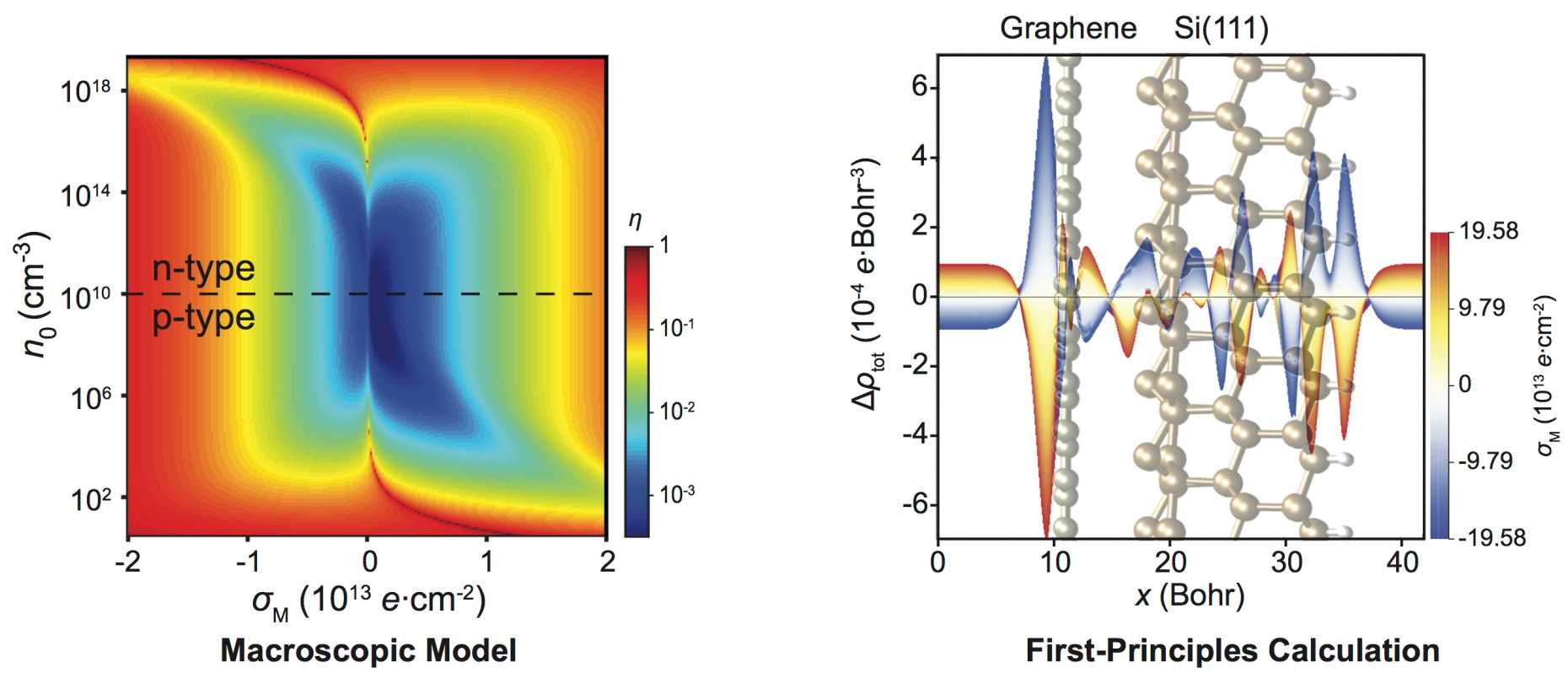[Nano Lett.] Multiscale Analysis for Field-Effect Penetration through Two-Dimensional Materials
Our theoretical framework elucidates how transparent for an one-molecule-thick 2D material to an electrostatic field.

Gate-tunable two-dimensional (2D) materials-based quantum capacitors (QCs) and van der Waals heterostructures involve tuning transport or optoelectronic characteristics by the field effect. Recent studies have attributed the observed gate-tunable characteristics to the change of the Fermi level in the first 2D layer adjacent to the dielectrics, whereas the penetration of the field effect through the one-molecule-thick material is often ignored or oversimplified. Here, we present a multiscale theoretical approach that combines first-principles electronic structure calculations and the Poisson–Boltzmann equation methods to model penetration of the field effect through graphene in a metal–oxide–graphene–semiconductor (MOGS) QC, including quantifying the degree of “transparency” for graphene two-dimensional electron gas (2DEG) to an electric displacement field. We find that the space charge density in the semiconductor layer can be modulated by gating in a nonlinear manner, forming an accumulation or inversion layer at the semiconductor/graphene interface. The degree of transparency is determined by the combined effect of graphene quantum capacitance and the semiconductor capacitance, which allows us to predict the ranking for a variety of monolayer 2D materials according to their transparency to an electric displacement field as follows: graphene > silicene > germanene > WS2 > WTe2 > WSe2 > MoS2 > phosphorene > MoSe2 > MoTe2, when the majority carrier is electron. Our findings reveal a general picture of operation modes and design rules for the 2D-materials-based QCs.
external pageNano Lett. 2016 ASAP Article 10.1021/acs.nanolett.6b01876call_made
